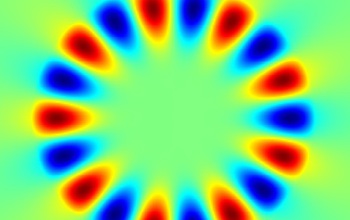Multimedia Gallery
Whispering galleries have been around for a while. The modern-day twist is in the materials.
Engineers Elaine Haberer and Nosang Myung at the University of California, Riverside, use laser light to amplify the detection of single particles, a technique known as whispering gallery mode resonators. Whispering galleries that involve sound have been around for a while. Famous examples include Grand Central Terminal and St. Paul's Cathedral in London, where the domed geometry of the rooms amplifies the faintest whisper to listeners well outside of earshot. The modern-day twist is in the shape and makeup of the cavity--which amplify light instead of sound. Shown here is a cross-sectional view of a circular optical cavity or resonator showing whispering gallery modes total internally reflected along the surface.
Credit: Joe Cheeney, University of California-Riverside
Images credited to the National Science Foundation, a federal agency, are in the public domain. The images were created by employees of the United States Government as part of their official duties or prepared by contractors as "works for hire" for NSF. You may freely use NSF-credited images and, at your discretion, credit NSF with a "Courtesy: National Science Foundation" notation.
Additional information about general usage can be found in Conditions.
Also Available:
Download the high-resolution JPG version of the image. (80.3 KB)
Use your mouse to right-click (Mac users may need to Ctrl-click) the link above and choose the option that will save the file or target to your computer.
Related story: Like cotton candy? You'll love electrospinning



